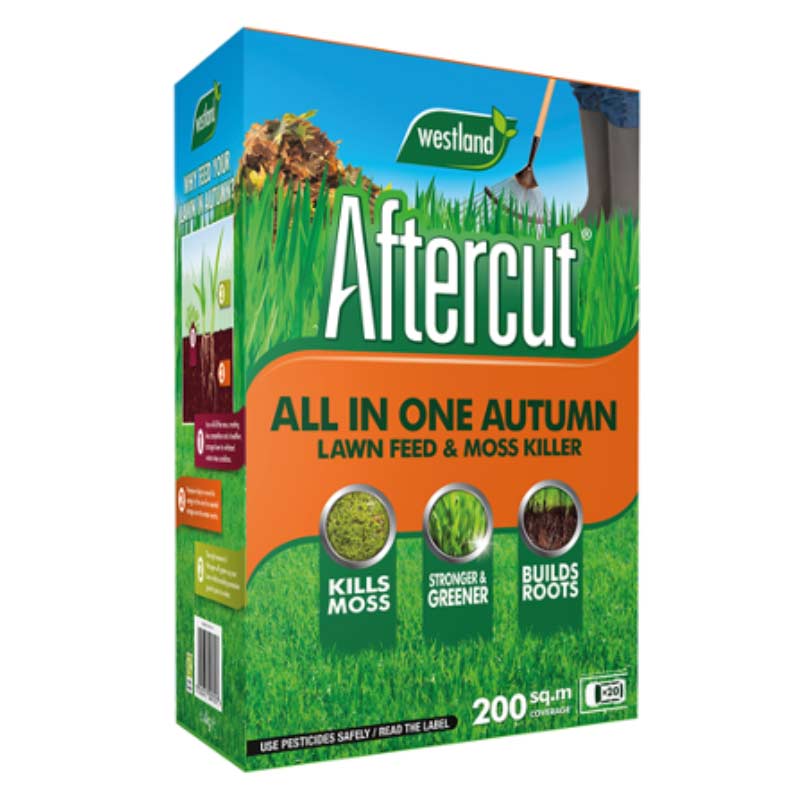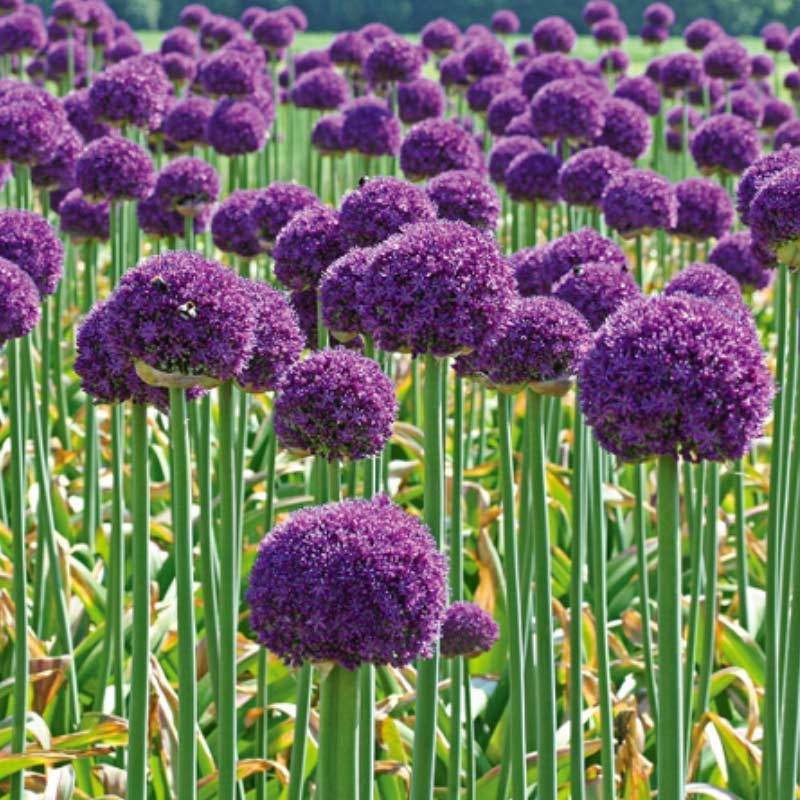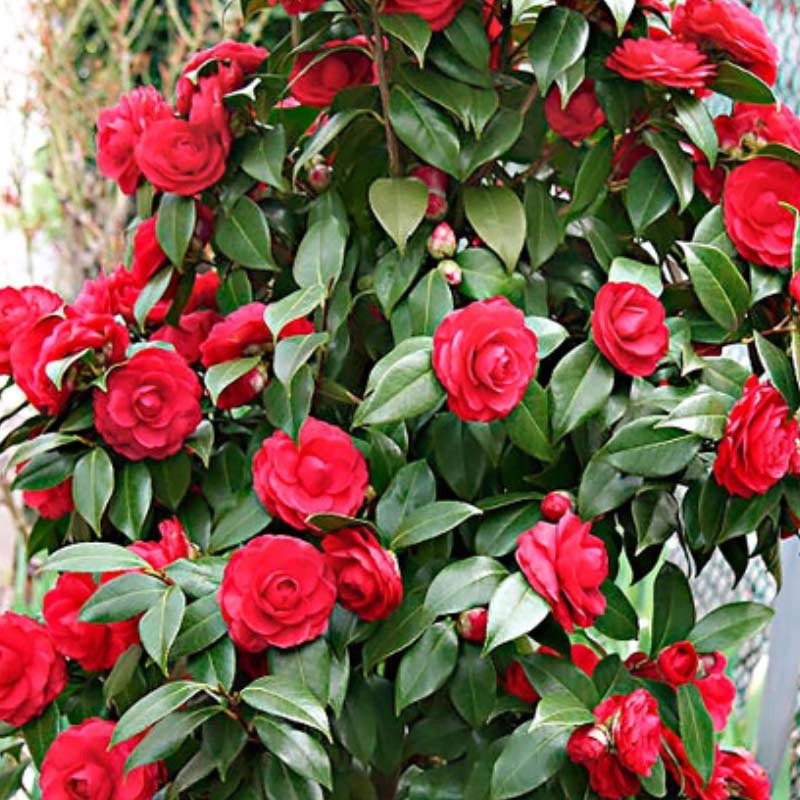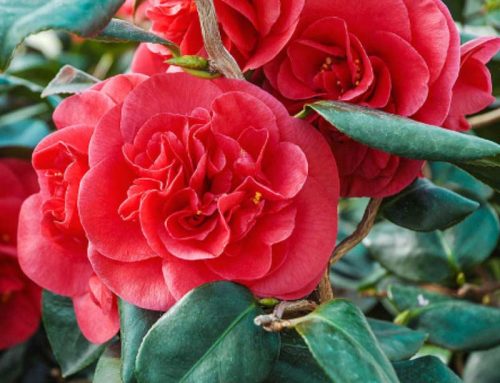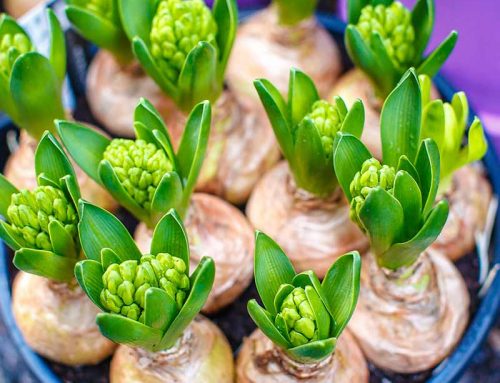Gardening jobs to do in autumn
1.Lawn Care
In winter, the wet, low temperatures and weak sunshine afflict the lawn. That’s why lawns need some attention before the cold spell begins. When the leaves fall in autumn, they should be cleared from the lawn on a regular basis as leaves left lying on the lawn will deprive it of light and encourage the formation of dry, brown patches and the growth of moss. Make sure that the grass is not cut shorter than 5 cm as longer grass can make better use of less sunlight. This will ensure better resistance against weeds and moss. Remove moss using a spring-tined rake and add it to the compost heap. If you have large amounts of moss, you may want to use a moss killer on your lawn first.
Next, improve drainage and aeration around paths and play areas by making deep holes with the prongs of a garden fork at 10 cm intervals. Brush in a sandy top dressing afterwards, followed by an application of autumn lawn feed to prepare your lawn for the cold winter months.
Autumn is a great time for sowing a new lawn too, giving it plenty of time to establish before next summer. Once regrowth has started in a couple of weeks, you could apply some autumn lawn feed which will help to strengthen the roots for the winter ahead. Autumn fertilisers usually have a low nitrogen content and a high level of potassium. The increased amount of potassium strengthens the grass and increases its resistance to frost. Traditional lawn fertilisers should not be used in autumn since they contain a high amount of nitrogen and make the lawn grow faster, which in turn makes it more susceptible to frost. As a general rule, you should mow your lawn for the last time in early November.
- Plant spring bulbs
Bulbs can also be planted in autumn so that their flowers germinate from the soil at the right time in spring to delight you with their blaze of colour. The right position is crucial for the heralders of spring to thrive and flower. Most bulbs like fresh, moist soil in spring, but in summer, during their dormant period, the soil can be dry and porous. Bulbs should be planted in the ground at a depth of two to three times their height. You then place the bulbs in the ground with their tip facing upwards, cover them with the soil from the planter, and press down. To attract pollinators, you will need to select your plants carefully. Think about which bulbs are rich in nectar. For example, crocuses and alliums are popular choices and they are great for attracting bees to your garden.
- Don’t forget to water or feed
Summer has gone but your plants and flowers may still need watering and/or liquid feed. Pots and containers still need plenty of care so maintain feeds and watering. If you have camellias (pictured) or rhododendrons in pots, it’s very important that they don’t dry out now while they are forming next year’s buds. Remove any tired bedding and put on the compost heap if you have one. Remember to give the compost heap a turn every month to help aerate.
- Mulching
You can mulch beds and borders in autumn or early spring – whichever is your preference. The benefit of mulching at this time of year is that it will provide a cosy mulch blanket for when winter rolls around.
5.Cut back perennials, bushes & shrubs
- It’s important that perennials are cut down as otherwise they may decay. It’s essential to avoid putting too much pressure on the plants to draw sap back to their roots. If your shrubs go yellow, their stems bend towards the ground or they start to go it is time to cut them down. This is because the plants are now drawing their sap back to their roots. If they are not cut down, they may decay. Bushes and shrubs can generally be cut to about a quarter of their size. Bushes and shrubs can be cut to approximately a quarter of their size. This can, however, vary according to the type of bush or shrub. There’s still plenty of colour to be had in the herbaceous borders but, soon perennial plants will begin to die away. So, it’s a good time to assess what worked, what didn’t, what needs moving, what needs dividing and what needs to be gotten rid of entirely. Plants such as catmint (nepeta) and lavander that are going brown can be chopped back – you may even get a bit of regrowth in this clement weather. If you have big gaps in your border, you could plant some late-flowering perennials, such as sedums and asters, which will give you flowers and interest through the autumn.
- Hedges are great at providing valuable wind breaks and offer fantastic privacy in our gardens. Hedges will last all year around but regular maintenance is still essential as they are renowned for being extremely demanding on soil nutrients. For example, evergreen hedges need cutting once a year and early autumn is a good time to get this done. Hedges should be pruned for the last time in autumn to prevent decaying if damp accumulates. Only cut deciduous hedges back as far as you can without creating any holes as these will not grow back over the winter and the hedge could look bare. Any tree leaves lying on the hedge should also be removed as otherwise the hedge will not get enough fresh air and sun and could rot.
- It’s time to trim evergreen bushes and hedges, such as box and as well conifers. With the exception of yew, don’t trim conifers back into old wood as they won’t put on fresh growth. Your wisteria is probably looking a bit mad as well – you need to cut back all that whippy growth to about five or six leaves in length.
- Rambling and climbing roses can be pruned now unless they are repeat-flowerers. Remove suckers from roses bushes and from the base of trees. If you have variegated plants, remove any stems that have reverted to being green.
6.Clear summer bedding
We know it’s difficult to clear all those beautiful annuals but autumn really is the perfect time to do it. Unlike perennials, annuals will not come back season after season, so leaving these in the ground is pointless. Pull everything up and add them to your compost pile!
7.Protect plants
Beds, roses and other plans Any plants sensitive to frost needs to be covered. You can try covering them with leaves but things like lightweight fleece or frostgard will help. If you have any plants sensitive to frost ,should be covered with brushwood or leaves or wrapped in bubble wrap or lightweight fleece or you might need to take them indoors.
8.Attract wildlife to your garden in autumn
If you want to attract wildlife to your garden you will need to do things a little differently! Animals like hedgehogs love finding places where they can shelter. Leaf piles and compost heaps make great homes for them so if you want to attract hedgehogs you can ignore our advice about clearing all the leaves from your garden! Maybe leave an area with leaves in the corner of your garden to make them feel welcome. It’s great seeing birds in the garden and there are few little extra things you can do to make them feel at home. If you plant wildlife friendly trees like hawthorn, alder buckthorn and pussy willow you will have no problem attracting a variety of birds and other wildlife to your garden.

